Let’s talk about estates. Let’s talk about big practical family cars. They have to be bland, heavy and boring, right?
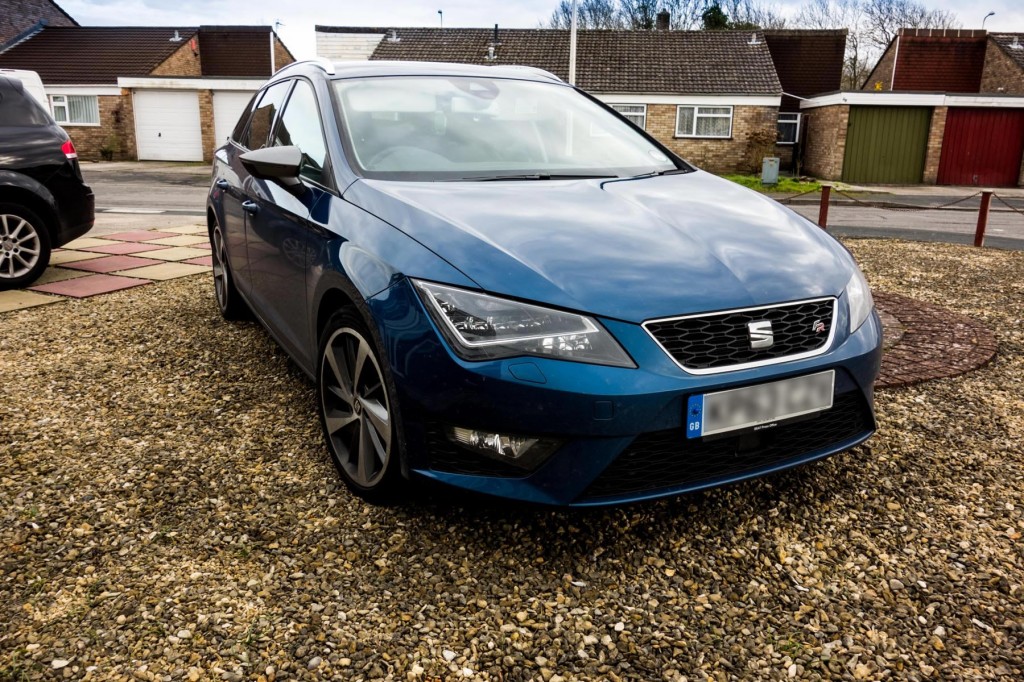
Having recently been to the Barcelona press launch to drive the new Leon Cupra in various guises, it was an opportunity too good to miss to live for a while at the other end of the spectrum, with practicality, lots of space and something more economical.
Enter the new SEAT Leon ST or Sport Touring to give it the full title.
For the first time ever in the Leon’s history, SEAT now offer a choice of three different body styles, the Leon’s forebears the MK1 and MK2 were only ever available as a five door body style.
I have been fortunate enough to drive the SC Sport Coupé (three door) and the more familiar five door hatchbacks in FR spec and as mentioned above I have also driven the all new Cupra in both bodystyles in recent weeks.
Now enter the Leon ST which I have been lucky enough to borrow from the SEAT UK press pool for a longer term test, the car I have is the Leon ST FR 2.0 TDI with a 6 speed manual transmission in a conservative yet tasteful dark metallic blue known as Apollo Blue.
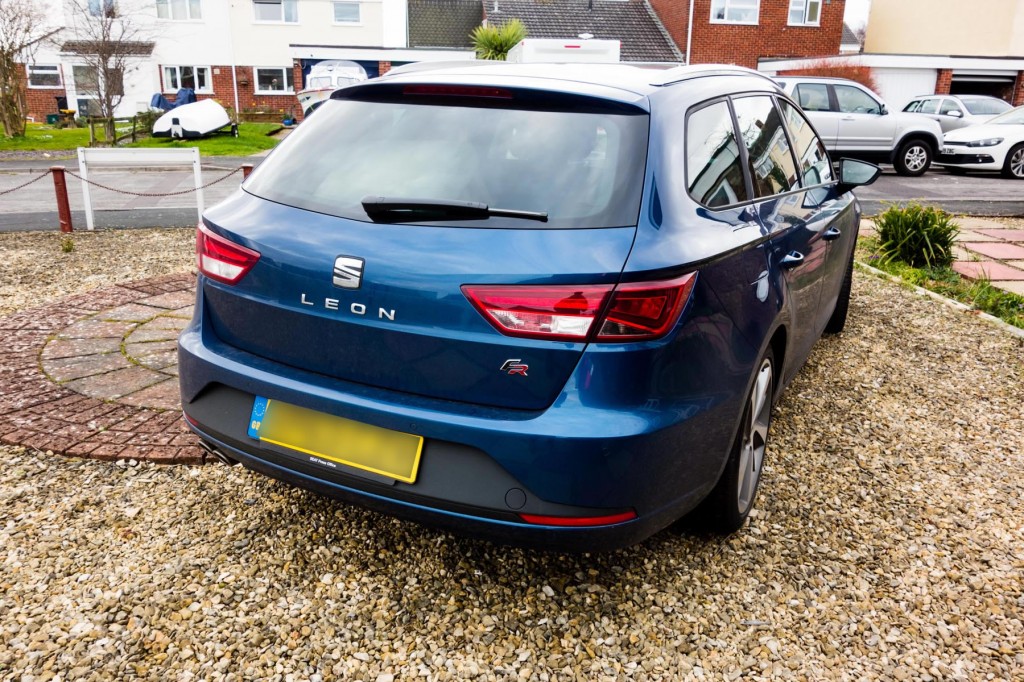 As is often the case with press cars SEAT have specced the car with pretty much every option ticked. This car is no exception. In fact is has a grand total of £3,495’s worth.
As is often the case with press cars SEAT have specced the car with pretty much every option ticked. This car is no exception. In fact is has a grand total of £3,495’s worth.
The main car’s specification is as follows:
- Model: SEAT Leon ST FR 2.0 TDI 184 PS (£23,380)
- Colour: Apollo Blue, metallic (£495)
- Avg fuel economy: 65.7 mpg
- CO2 emissions: 112 g/km
- VED: band C
- 0-62 mph: 7.8 seconds
- Top speed: 142 mph
I will cover the options that were fitted later.
I am currently between cars with my own Leon Cupra SC on order, and my wife drives the family car, an ALTEA XL Ecomotive. It was only fitting that we gave the Leon ST a good test as the family workhorse. So in the fortnight we have had the estate it has been used for the commute, the school run, the family visits at the weekends and even a run to the tip for good measure.
Practicality
As you would expect the ST scores well here. The cabin is spacious, but it generally no different to the other two Leon body styles. Rear legroom is adequate, not quite as much room on offer as the larger Altea, but still plenty of room in the back for two adults to sit in comfort. I had three adults in the back the other day on a work pub lunch trip and they said it was a bit of a squeeze, but I think that’s the same for most cars of this size with a rear bench arrangement, unless you get into large SUV or people carrier territory.
The car has the Leon’s usual plentiful cubby holes with a good size glove box, side panels, armrest storage and the fold down compartments under the front seats.
Then we get to the boot, which is of course the defining factor of the ST and the reason many people choose an estate.
It is a very good size, providing variable luggage space from 587 litres up to 1,470 litres with the seats folded down. Length wise it seems on par with the Altea, although the Altea XL has the advantage that the rear seats can be slid forward providing more room. The Leon doesn’t offer this feature, but certain other variants of the ST (not FR due to sports seats) provide extra storage as the front passenger seat backrest folds forward and flat to provide a maximum load length of 2.67 metres.
The floor of the Leon’s boot can be lowered and the familiar sliding top cover is present which can be retracted with one simple press on the front edge.
One neat convenience feature is the quick release switches for the rear seats. These can be pulled individually to drop the seats down from the boot area without needing to first go through the back door to unlatch them. I have included a video of this in action below.
The edge of the boot also features a sill protector which is a nice touch and should stop some scuffs to the bodywork when loading the car.
I used the car to take some old dining furniture and a couple of CD towers to the tip and with the seats folded down the car swallowed these with ease.
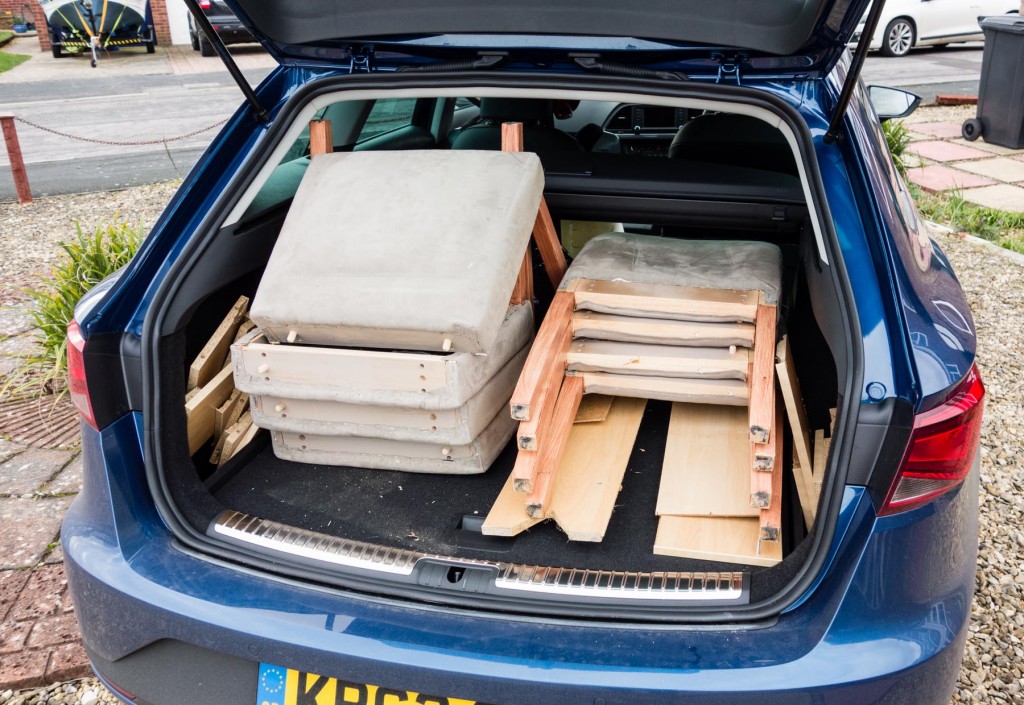 So for its estate based practicality the car ticks all the boxes.
So for its estate based practicality the car ticks all the boxes.
Looks
SEAT have done a great job with the styling of the ST. In fact many (myself included) think that it looks better than the five door version. The SC in our opinion takes the top spot on the styling front, but lacks some of the practicality that comes with the larger cars but it is a surprise that the ST looks more striking than its five door counterpart. Its proportions just seems to hang together better all round, the extra length gives the car a purposeful look and finish that the 5 door hatch lacks.
One of my team at work had seen pictures of the ST and he is currently looking for his next car (currently driving and Audi A3) and he was commenting how gorgeous the ST was. He was pleasantly surprised when I told him I had one on loan and I took him out in it for a test run. He does an hour long commute to work each day and was very interested in the car’s Adaptive Cruise and Lane Assist features, which I will go into more detail about below.
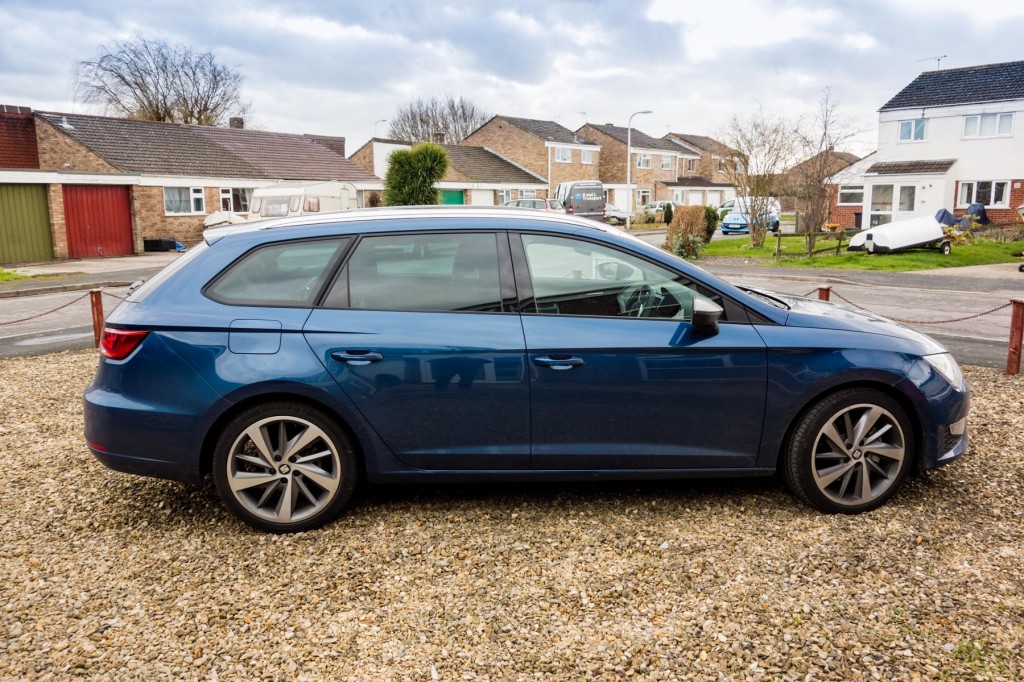 Combined with the pleasing style and shape, the all round LEDs and the contrasting optional titanium pack fitted to our test car, the ST is certainly a classy looking tourer. Personally I was not a huge fan of the colour of this particular car, being a bit subdued for my tastes, but then for many it will be a preferred choice and does suit this class of car well.
Combined with the pleasing style and shape, the all round LEDs and the contrasting optional titanium pack fitted to our test car, the ST is certainly a classy looking tourer. Personally I was not a huge fan of the colour of this particular car, being a bit subdued for my tastes, but then for many it will be a preferred choice and does suit this class of car well.
Being in FR trim, with the Titanium Pack included, the car sits on striking two-tone machined alloy and painted glossy titanium grey 18″ wheels, the same as seen on the five door and SC models. This is matched with the titanium grey coloured door mirrors.
For looks, SEAT are getting top marks again.
Performance and handling
The 2.0 TDI engine is the pinnacle of power for the current ST range with 181HP (184PS) on tap and with up to 258 lb/ft (380NM) of torque our test car certainly has more than enough power to deal with most scenarios. A good overtaker when required and a nice steady cruiser on the motorway, the car always felt poised and ready to go when you needed it to. The torque providing a bundle of pulling power no doubt making it a great tow car too another bonus in the touring estate segment.
The ST just as the other Leon’s in the range is equipped with the SEAT Drive Profile system, and I spent most of the time with it running in Sport mode. This changes the engine tone in the cabin and door panel led lights glow a subtle red, steering is firmed up and throttle response is quicker to react. The usual, Normal, ECO and individual modes are also available, as seen in other body styles.
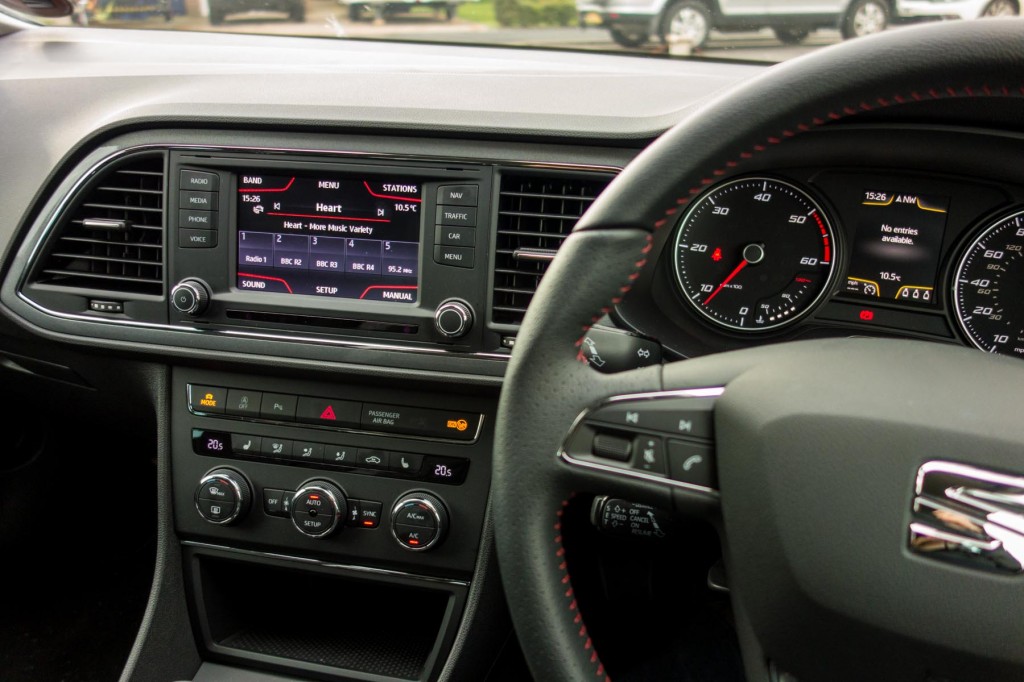 In terms of handling I have to say I was pleasantly surprised. It certainly is no Cupra, but the car felt really good when pushed into corners and on exit too. It certainly didn’t feel like a particularly big car to me and you can still have fun in it. The estate size doesn’t hold it back in that sense, of course the extra length and weight make a difference over the five and three door cars, but not as much as you might expect. Good news for someone who wants to have a bit of fun when the the kids, a week’s worth of shopping or the family dog are not along for the ride.
In terms of handling I have to say I was pleasantly surprised. It certainly is no Cupra, but the car felt really good when pushed into corners and on exit too. It certainly didn’t feel like a particularly big car to me and you can still have fun in it. The estate size doesn’t hold it back in that sense, of course the extra length and weight make a difference over the five and three door cars, but not as much as you might expect. Good news for someone who wants to have a bit of fun when the the kids, a week’s worth of shopping or the family dog are not along for the ride.
The car’s chassis could handle the unreliability of Britain’s roads nicely and it felt nicely planted yet supple enough for changes in circumstances.
Options, lots of options
As SEAT owners have come to expect, the ST comes with a number of good options fitted as standard. Many of which would attract extra cost for other makes. These include the Auto Dimming Mirror, Cruise Control and Dual-Zone Climate Control.
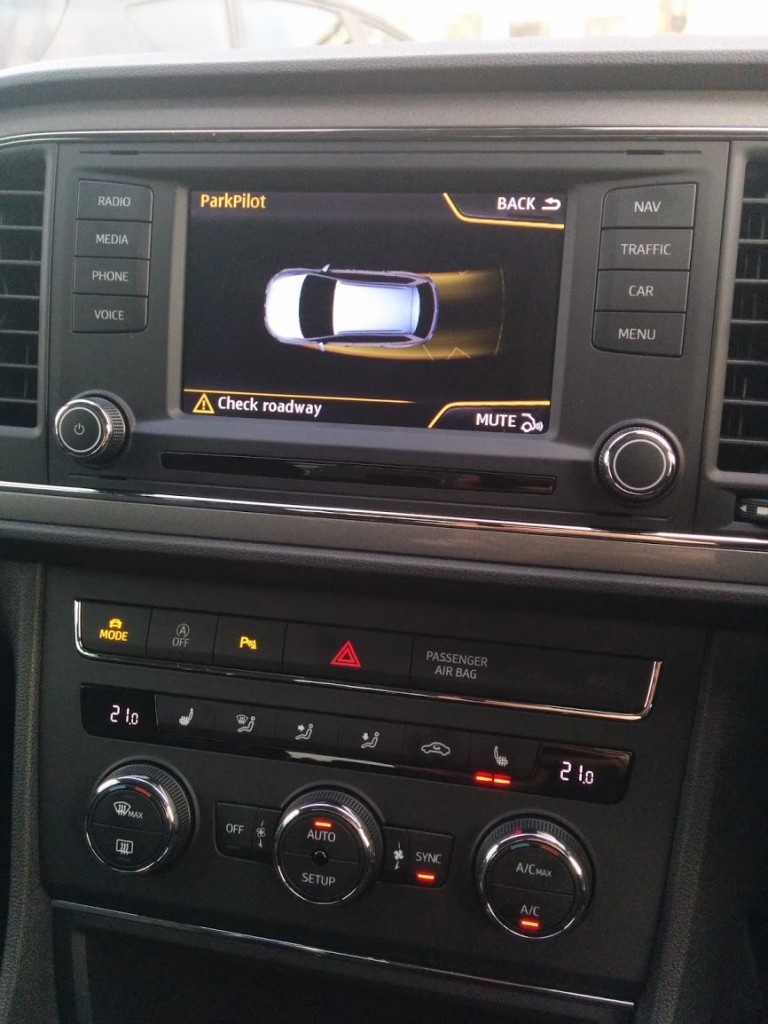 As I mentioned previously this particular car had the majority of additional options fitted. These were as follows:
As I mentioned previously this particular car had the majority of additional options fitted. These were as follows:
- Technology Pack: Includes LED Headlights Pack, Navigation System and DAB digital radio – *£0
- Leather Pack: Includes leather sports seats with perforated leather bolsters and Winter Pack – £1,195
- Titanium Pack: Includes 18-inch ‘Performance’ machined alloy wheels with 225/40 R1892Y tyres and titanium-coloured door mirrors – £700
- SEAT Sound System: 135W/six-channel amplifier with ten speakers including boot mounted subwoofer
– £250 - Convenience Pack: Includes rain-sensing wipers, light sensor (with automatic coming and leaving home function) and auto-dimming rear view mirror – £150
- Safety Pack: Includes Tiredness Recognition System and seat belt reminder for rear seats – £115
- Driver Assist Pack: Includes High Beam Assist and Lane Assist – £295
- Adaptive Cruise Control (ACC): with Front Assist – £500
- Boot divider net – £150
- Space-saving spare wheel – £95
*Technology Pack currently free-of-charge, RRP £1,075
Total cost of options: £3,945
Total cost for test vehicle: £27,325
Prices correct as of 1 October 2013, and are subject to change without notice
Out of these my top three were the sound pack (it really does sound excellent and the sub in the boot packs some punch), the Lane Assist (mainly for the novelty factor as I’m not on the motorway much), and the Adaptive Cruise control (a genuinely useful feature I now wish I had specced on my car).
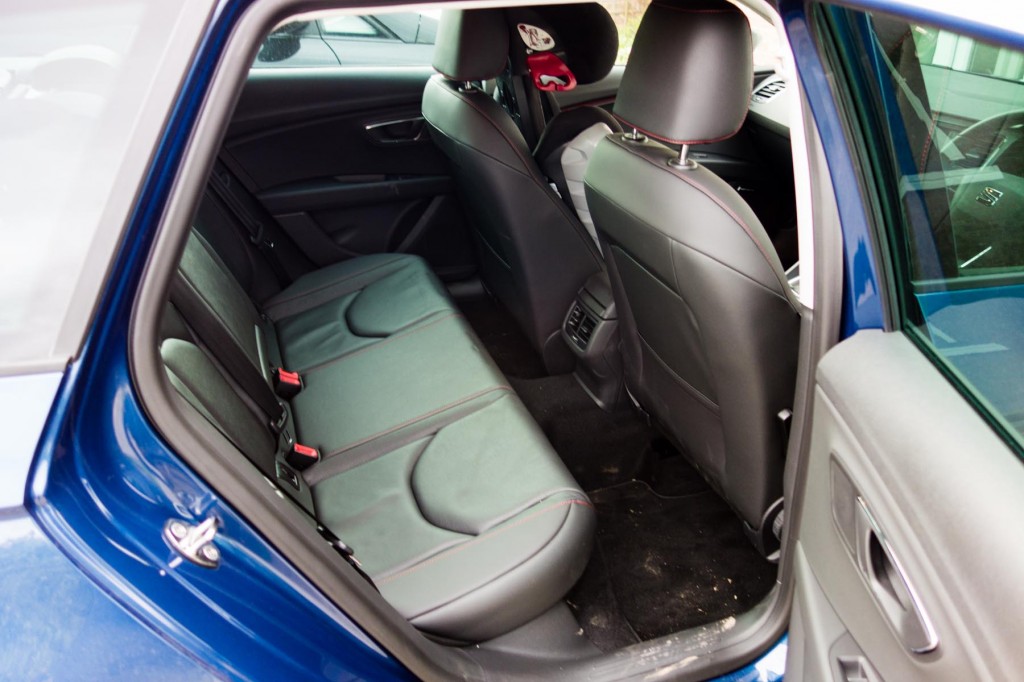 Lane assist combined with the Adaptive Cruise really does show how technology has come on in leaps and bounds since the MK2 first rolled off the production line. The days of self-driving cars becoming mainstream can’t be that far away. Imagine setting your destination and moving into the back seat on a long motorway journey to read a magazine or to have a snooze.
Lane assist combined with the Adaptive Cruise really does show how technology has come on in leaps and bounds since the MK2 first rolled off the production line. The days of self-driving cars becoming mainstream can’t be that far away. Imagine setting your destination and moving into the back seat on a long motorway journey to read a magazine or to have a snooze.
This car can keep itself in lane with the front fitted camera (the steering wheel literally turns corners on its own) and the front radar can detect other cars and maintain the speed to keep you at a safe distance. I tested this many times and pretty much every time I said “wow”, even if I was on my own at the time.
For someone who spends a lot of time on the motorway the Adaptive Cruise is a must. Lane assist is a safety feature, and not essential, but if you can afford it I would recommend it as well. Every now and then the wheel just nudges you slightly into a better line if you have drifted a little without knowing it. It’s certainly a cop out for lazy driving, but for people who hammer the motorways it could be a life saver, especially if combined with tiredness recognition (which I didn’t test out!).
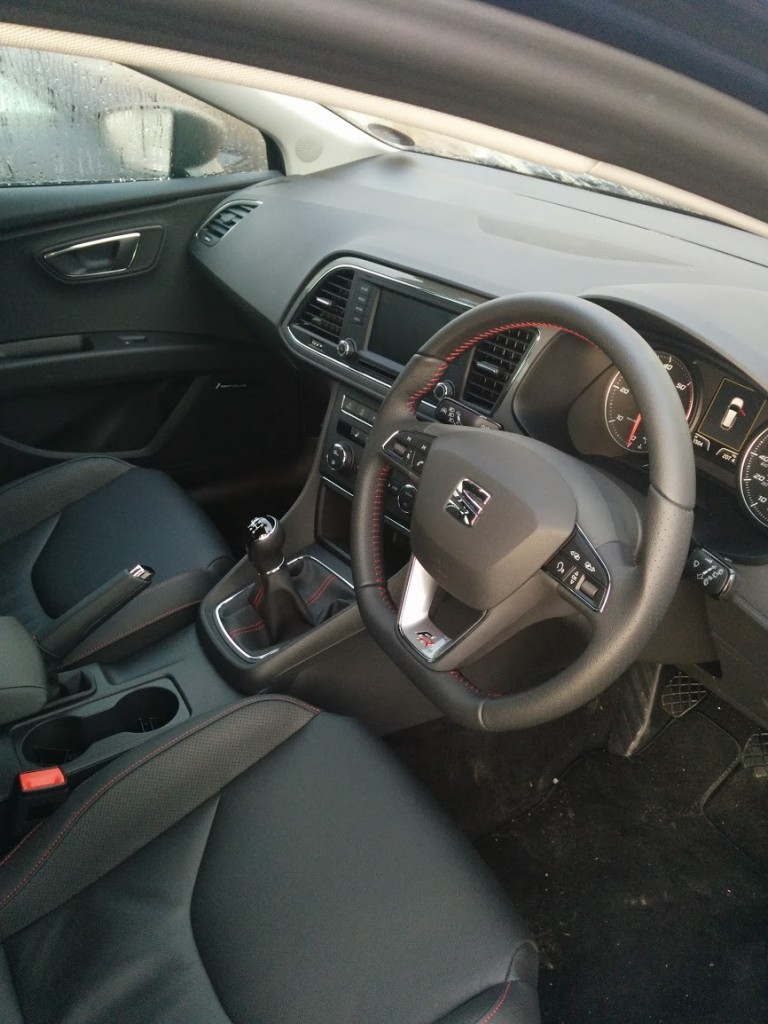 The car also had heated seats as well as full leather. The FR Sport seats are very comfortable and whilst I wouldn’t personally see the need for the heated seats on cloth, I would recommend them if you go for the leather option as fitted to our test car. It quickly takes the chill away first thing in the mornings and warms up quicker than the cabin heater.
The car also had heated seats as well as full leather. The FR Sport seats are very comfortable and whilst I wouldn’t personally see the need for the heated seats on cloth, I would recommend them if you go for the leather option as fitted to our test car. It quickly takes the chill away first thing in the mornings and warms up quicker than the cabin heater.
Conclusion
So yet again the new MK3 Leon can do no wrong in our eyes. The combination of the Leon’s value for money with added practicality the estate brings to the range and its striking good looks that makes it a stand out model in its segment. The power on tap and the good standard kit with additional options, it is a great all round workhorse of a car. I would strongly recommend this to anyone looking for a larger more practical car with a bit of a sporty youthful edge to it.
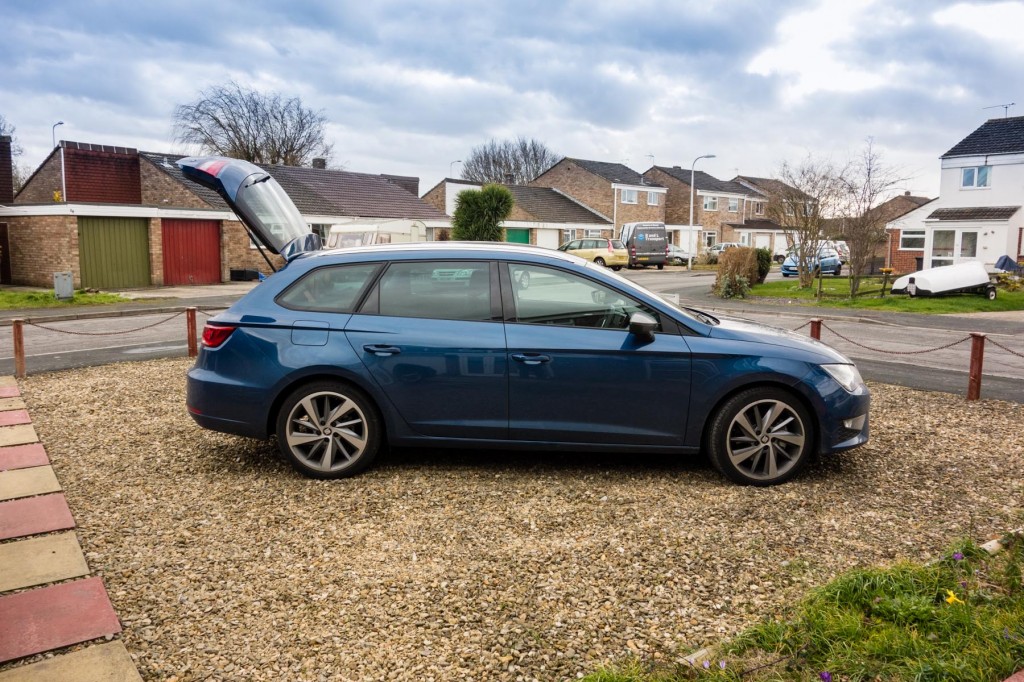
Having had the opportunity to come back to earth quickly from the heady heights of high performance, pin sharp handling and the raw power of the Cupra in Barcelona, there is one thing that keeps crossing my mind as I drive the ST. If they build a Cupra version of the ST what a beast of a Q car that would be…


